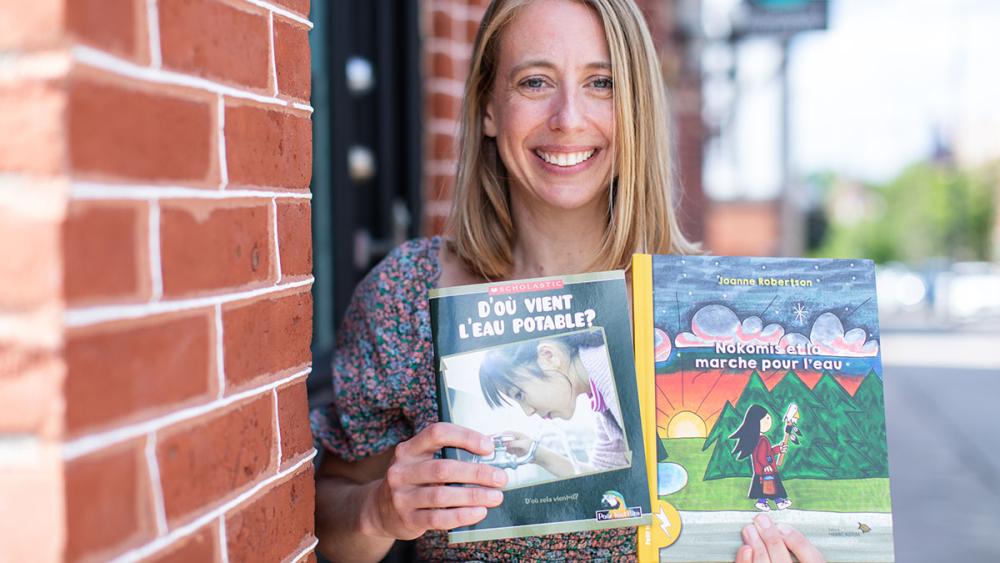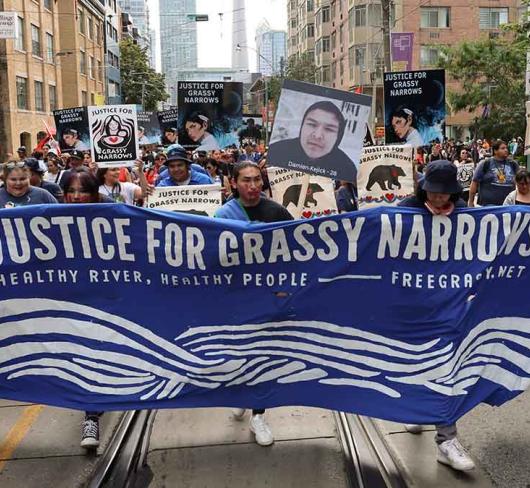
Engagement Through Elections
Voter turnout in June’s Ontario provincial election was dismal with only 43.5 percent of eligible voters casting a ballot, the lowest in Ontario’s history. With just over 40 percent of voter support, the Conservatives won almost 70 percent of the seats.
So, what happened? Some blame the low voter turnout on the pessimism caused by attack ads. Others hypothesize it’s the system itself, first-past-the-post, disincentivizing participation.
Publications like The Manitoulin Expositor suggest solutions from allowing electors to choose “none of the above” to having more funds for voter education campaigns with slogans like, “You never know when your vote may count.”
As educators, we have an important role to play in ensuring students develop their sense of agency so they have the critical thinking skills and passion to become engaged voters when their time comes to cast a ballot.
In my experience, one of the most important factors in political engagement is developing the ability to understand social issues on a personal level. This can be difficult for issues that seem far removed from us or that we have not experienced first-hand. And if it’s difficult for adults, imagine the challenge it could be for younger learners.
Helping primary students explore complex political and social justice topics is daunting. How do you make issues like systemic inequities understandable and engaging to students as young as five? I’ve grappled with this question for many years and have had various levels of success with different projects.
This past school year, I again dedicated myself to this goal. The Grade 1 and 2 students in my French Immersion class come from diverse backgrounds with families of Asian, Middle Eastern, Latin American, Western European and Eastern European descent. In our school’s neighbourhood, North Riverdale, the most common languages other than English spoken at home include Cantonese, Greek, Mandarin, French, Italian, Serbian, Spanish and Russian.
Throughout the year, my class was able to share rich knowledge related to their backgrounds. For example, one of my students who is of Ukrainian descent talked to us about the rallies she attended with her family and described the situation in Ukraine as well as in Russia. With that personal connection, my class was able to develop empathy for those suffering from the war.
During a Social Studies/Science unit on the theme of water, I was hoping to inspire the same type of understanding and empathy for Canada’s water crisis. However, while reading The Water Walker, a book about water activist Josephine Mandamin, with my students, I experienced challenges. I couldn’t find a successful way to really engage my students in the book’s themes.
At the same time we were reading The Water Walker, the provincial election was ramping up and I was also trying to find meaningful ways to involve my class in that experience.
When I started to connect the two issues, the way forward clicked for me. To engage my students, I needed to link the complex issues in the lesson to a concrete task. By doing that, students could develop a personal connection to the topics, giving them a context to form their own opinions and a tangible way to engage.
The concrete task I set for my class was to write to candidates about water in Ontario. Each student picked one of our riding’s candidates and wrote a letter explaining what we were learning about water inequities. Throughout our project, I saw my students’ knowledge and passion grow.
This project had my class deeply engaged and demonstrated that students of any age can understand and become excited about complex social and political issues.
Step 1: Writing to the Candidates
After introducing the meaning of elections, I set out the task, including writing to candidates about the issue and asking the candidate how their political party planned to help if elected.
With this activity in mind, my students became much more involved as we re-read The Water Walker. We extended our exploration by listening to the stories and ideas of young activists like Autumn Peltier.
In their letters to the candidates, my students talked about boil water advisories, water treatment plants and communities in Ontario that don’t have access to clean water. They concluded their letters with the question: How will you help? Some students also shared their own ideas for solutions.
Through this writing activity, not only did students become invested in issues like boil water advisories, they became excited about politics.
We explored the parties and their platforms, which my students ended up describing as the red, blue, orange and green teams. They counted lawn signs on their streets and watched out for signs in other neighbourhoods. One student asked why the names on the signs changed when he was at his cottage and why he saw so many blue signs there but not near our school. Another student asked what would happen if there was a tie between two of the teams. I wasn’t completely sure about that one so we looked it up. In the process, we learned that Prince Edward Island breaks a tie with a coin toss!
It was a good thing students were so excited about elections because the candidates’ responses were a long time coming and not always easy to decipher.
Step 2: Understanding the Responses (and Non-Responses)
I thought letters from young students would equal fast responses from candidates, but I was wrong. I sent at least two follow-ups to all the candidates. In the end, we only received responses from Mary Fragedakis and Marcelo Levy, the Liberal Party candidate and Green Party candidate respectively.
Ms. Fragedakis’ letter was the one my students understood best. She had mostly straightforward language like: “Everyone should have access to safe and clean drinking water…. If elected, the Ontario Liberals will work with Indigenous communities and other levels of government to end all boil water advisories in First Nations and Northern communities. We will do this by fixing our water system so it brings clean drinking water to everyone in Ontario.”
Mr. Levy’s response required a lot of unpacking. One section read: “To protect biodiversity the Green Party is proposing to protect and conserve 25% of Ontario by 2025 and 30% by 2020 (sic)….The Green Party is proposing to double the size of the Green Belt to protect wetlands and watersheds creating a Blue Belt.”
To understand this response, we reviewed what “doubling” means, studied a map of Ontario and learned lots of new vocabulary.
When discussing Mr. Levy’s letter, one student noted that Mr. Levy didn’t give a direct response about boil water advisories. In our discussions of Ms. Fragedakis’ response, a student wondered how exactly she was going to fix the “water system.”
Since we didn’t receive a letter from the NDP or the Conservative candidate, we looked at their on-line platforms. The NDP promised to end all drinking water advisories, although it wasn’t clear how they planned to do this. On the Conservative website, we couldn’t find any information about their environmental plans except for a promise to build more public transit.
Steph 3: Taking Action
At the end of The Water Walker, the author concludes Josephine’s story like this:
“Every morning she puts down her semaa for Nibi and sings her gratitude. She prays people wake up and realize that without Nibi there is no life. And she continues to wonder… ‘What are you going to do about it?’”
When answering this question, my students came up with thoughtful (if not always feasible) suggestions like mailing jugs of water to towns that have boil water advisories. It’s often challenging for students to find practical ways to help solve complex issues, which is another reason the election was a perfect context for exploring the subject of water rights.
My students learned that helping can mean sharing their knowledge and encouraging others to take action. They also learned that voting can be a way to help.
On election day, I set up a polling station in our class. Before voting, I explained to my students and their families that we were casting our ballot based on one topic in particular, the environment. I encouraged families to talk to their children about other election issues of interest.
In order to vote at our class polling station, students made their own driver’s licenses and registered. We discussed how to mark a ballot and they were very excited to cast their vote. If my class had decided the election, Ontario would currently have a minority Green Party government. The results were:
Green Party – 8 votes
Liberal – 5 votes
NDP – 4 votes
Conservatives – 2 votes
Some students shared how they voted and why. The reasons ranged from: “Ms. Fragedakis says she will get clean water to everyone” to “Mr. Levy knows a lot” to “My parents say Mr. Tabuns (the incumbent NDP candidate) does a good job.”
One student had a very difficult time choosing between the Liberal Party, NDP and Green Party. He asked me multiple times to summarize their promises. In the end, the student told me he chose Ms. Fragedakis because he thought she would help the most. He also reminded me that I shouldn’t actually count his ballot in the real election because he’s not old enough to vote yet.
When this student is old enough though, I feel confident he will be an informed and engaged voter. Maybe he will even remember The Water Walker. If boil water advisories are still an election issue when my students are old enough to vote, politicians should be ready for 100 percent voter turnout.
Christina Heyding is a member of the Elementary Teachers of Toronto.

